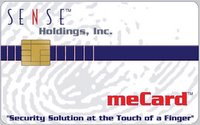Sophistication of Purchasers Key to TTAB Reversal of "ME-KEY" 2(d) Refusal
The differences in the goods and the sophistication of purchasers led the Board to reverse a Section 2(d) refusal of the mark ME-KEY for "physical access monitoring devices, namely biometric identification processors." The PTO maintained that the mark was likely to cause confusion with the mark MECARD, registered for encoded smart cards in the field of access control. In re Radian, Inc., Serial No. 76467020 (January 24, 2006) [not citable].

The Board first found that the marks, although having obvious differences in appearance, sound, and commercial impression, are similar in connotation: each suggests a device containing personal information about the owner. The Board concluded that the marks are "somewhat similar," and thus the first du Pont factor favored the PTO's position.
With regard to the goods, Applicant argued that Registrant's goods involve data encoded for reading by a digital data processor, whereas its goods involve processors of raw biometric information, "such as optical scanners for iris recognition, voice analyzers for voice recognition, blood pressure monitors for phsyiological monitoring, etc."

The Board observed that "while these goods may well be marketed as alternative ways of restricting access, registrant's and applicant's goods are quite different in the way they operate."
The Board agreed with Applicant's argument [despite the lack of evidence regarding the cost of the goods] that "the purchasers of these respective products are likely to be highly sophisticated in security, facilities management and information technology."
"By definition, registrant's and applicant's products will never be impulse purchases, but rather will be subject to sophisticated sales efforts, possible face-to-face meetings and careful customer decision making."
The Board therefore concluded that confusion is unlikely, and it reversed the 2(d) refusal.
TTABlog comment: The sophisticated purchaser argument is seldom successful. Often the proponent fails to provide any supporting evidence, and many times the Board simply pooh-poohs the argument by pointing out that even sophisticated purchasers are not immune to confusion when identical or nearly identical marks are involved. Here, despite the apparent lack of evidence, the Board accepted the sophisticated purchaser argument. I get the feeling that, because the marks were "somewhat similar" and the goods somewhat related, the Board needed something to get it over the hump in order to reverse the refusal. I think it should have found the marks more dissimilar than similar.
Text Copyright John L. Welch 2006.




0 Comments:
Post a Comment
<< Home